On the Feasibility of Gap Detection of Power Transformer Partial Discharge UHF Signals: Gap Propagation Characteristics of Electromagnetic Waves
Abstract
:1. Introduction
2. Propagation Characteristics of Electromagnetic Waves in Gaps
2.1. Edge Diffraction
2.2. Kirchhoff Diffraction Theory
2.3. Propagation of Electromagnetic Waves in Transformer
3. Simulation Experiment
3.1. Simulation Model
3.2. Analysis of Simulation Results
3.2.1. Propagation Characteristics in the Transformer Gap of the Electromagnetic Waves Radiated by the PD Source in Different Directions
3.2.2. Influence of Gap Height on Gap Propagation Characteristics of the PD Electromagnetic Waves
3.2.3. Influence of Gap Depth on Gap Propagation Characteristics of the PD Electromagnetic Waves
4. Comparison with Experiment
4.1. Experimental Scheme
- (1)
- When the transformer gap is 3 cm high and 5 cm deep, the PD source is adjusted to X-, Y-, and Z-axis positive directions separately (refer to the coordinate system in the simulation experiment) to study the transformer gap propagation characteristics of electromagnetic signals radiated by PD source in different directions.
- (2)
- When the transformer gap is 5 cm deep and the PD source is oriented in Z-axis positive direction (refer to the coordinate system in the simulation experiment), the gap height is set to be 4, 3, and 2 cm separately to study the influence of gap height on the gap propagation characteristics of the electromagnetic wave.
- (3)
- When the transformer gap is 2 cm high and the PD source is oriented in Z-axis positive direction (refer to the coordinate system in the simulation experiment), the gap depth is set to be 18, 14, 10, and 6 cm separately to study the influence of gap depth on the gap propagation characteristics of electromagnetic wave.
4.2. Analysis of Experimental Results
- (1)
- When the transformer gap is 3 cm high and 5 cm deep, Figure 16 shows the layout of detection points in the experiment, where detection point Nos. 1–2 are located in the gap and the distance between the adjacent detection points is 2 cm. Detection point No. 3 is located in the transformer internal, and the distance from the tank wall is 2 cm. Detection point Nos. 4–6 are located in the transformer exterior, and the distance between adjacent detection points is 2 cm.
- (2)
- (3)
- On the basis of ensuring the operability of the experiment, the gap height is set to be 2 cm, the partial discharge source is oriented in Z-axis positive direction, the gap depths are 18, 14, 10, and 6 cm separately, and the electromagnetic wave signals are obtained according to the detection point layout in Figure 19. Figure 20 depicts the experimental results.
5. Conclusions
- (1)
- The intensity of the PD electromagnetic wave inside the gap is significantly greater than that in the transformer exterior. Therefore, in the gap detection of transformer PD electromagnetic wave signals, inserting the antenna sensor into transformer gap will considerably improve the detection sensitivity.
- (2)
- Inside the gap, the difference of electromagnetic wave intensity radiated by PD source in different directions is significantly large. Therefore, each of the four gaps of transformer is required to be set with an antenna sensor to achieve full range and a high-sensitivity detection of the electromagnetic wave.
- (3)
- The gap height will affect the propagation of electromagnetic wave in the transformer gap. In the reasonable range of the gap height of the transformer, the intensity of the electromagnetic wave shows an increasing trend inside the gap with the decrease of gap height.
- (4)
- Inside the gap, the intensity of the electromagnetic wave shows a gradually increasing trend with the decrease of gap depth. Moreover, the intensity of electromagnetic wave has an increasing trend at the tail of gap. The antenna sensor should be placed in the entrance or the tail area of transformer gap and try to avoid the middle and back sections of transformer gap as much as possible.
Acknowledgments
Author Contributions
Conflicts of Interest
References
- Siegel, M.; Beltle, M.; Tenbohlen, S.; Coenen, S. Application of UHF sensors for PD measurement at power transformers. IEEE Trans. Dielectr. Electr. Insul. 2017, 24, 331–339. [Google Scholar] [CrossRef]
- Chen, J. Detection and location of partial discharge in power transformers based on dielectric windows and UHF sensors. Power Syst. Technol. 2014, 38, 1676–1680. [Google Scholar]
- Jung, J.R.; Hwang, K.R.; Kim, Y.M.; Lyu, E.T.; Yang, H.J. Sensitivity verification and application of UHF sensor for partial discharge measurement in high voltage power transformer. In Proceedings of the IEEE International Conference on Condition Monitoring and Diagnosis, Bali, Indonesia, 23–27 September 2012. [Google Scholar]
- Judd, M.D.; Farish, O.; Pearson, J.S.; Hampton, B.F. Dielectric windows for UHF partial discharge detection. IEEE Trans. Dielectr. Electr. Insul. 2001, 8, 953–958. [Google Scholar] [CrossRef]
- Judd, M.D.; Yang, L.; Hunter, I.B. Partial discharge monitoring of power transformers using UHF sensors. Part I: Sensors and signal interpretation. IEEE Electr. Insul. Mag. 2005, 21, 5–14. [Google Scholar] [CrossRef]
- Ishak, A.M.; Ishak, M.T.; Jusoh, M.T.; Dardin, S.S.; Judd, M.D. Design and optimization of UHF partial discharge sensors using FDTD modeling. IEEE Sens. J. 2017, 17, 127–133. [Google Scholar] [CrossRef]
- Ouyang, X.D.; Ke, C.J.; Yang, X. Theoretical analysis of impact to detection sensitity for installation mode of UHF sensors in transformer PD Test. Transformer 2014, 5, 55–58. [Google Scholar]
- Yang, L.; Judd, M.D.; Costa, G. Simulating propagation of UHF signals for PD monitoring in transformers using the finite difference time domain technique. In Proceedings of the 17th Annual Meeting of the IEEE Lasers and Electro-Optics Society, Boulder, CO, USA, 20 October 2004. [Google Scholar]
- Wang, S.; Zhao, X.H.; Fang, X.M.; Li, Y.M.; Li, Y.M. UHF signal external detection of partial discharge in transformer. High Volt. Eng. 2007, 33, 88–91. [Google Scholar]
- Li, J.; Si, W.; Yang, J.; Yuan, P.; Li, Y. Propagation characteristic of partial discharge ultra high frequency signals outside transformer. J. Xi’an Jiaotong Univ. 2008, 6, 718–722. [Google Scholar]
- Zheng, S.S. Location of Partial Discharges in Transformer Windings by Using UHF Method. Ph.D. Thesis, North China Electric Power University, Beijing, China, 2015. [Google Scholar]
- Zhang, J.; Zhang, X.; Xiao, S. Antipodal vivaldi antenna to detect UHF signals that leaked out of the joint of a transformer. Int. J. Antennas Propag. 2017, 7, 1–13. [Google Scholar] [CrossRef]
- Xu, B.; Wang, J.; Li, Y.M. Emulational study on propagation of UHF signal emitted by PD in transformers. High Volt. Appar. 2007, 43, 244–247. [Google Scholar]
- Putro, W.A.; Nishigouchi, K.; Khayam, U.; Kozako, M.; Hikita, M.; Urano, K.; Min, C. Sensitivity verification and determination of the best location of external UHF sensors for PD measurement in GIS. In Proceedings of the 2012 IEEE International Conference on Condition Monitoring and Diagnosis, Bali, Indonesia, 23–27 September 2012. [Google Scholar]
- Wang, M. Geometrical Diffraction Theory; Northwest Telecommunication Engineering Institute Press: Xi’an, China, 1985. [Google Scholar]
- Wang, N. Modern Uniform Geometrical Theory of Diffraction; Xidian University Press: Xi’an, China, 2011; pp. 64–69. [Google Scholar]
- Ersoy, O.K. Diffraction, Fourier Optics and Imaging; China Machine Press: Beijing, China, 2015; pp. 35–47. [Google Scholar]
- Boggs, S.A.; Stone, G.C. Fundamental limitations in the measurement of corona and partial discharge. IEEE Trans. Electr. Insul. 1982, EI-17, 143–150. [Google Scholar] [CrossRef]
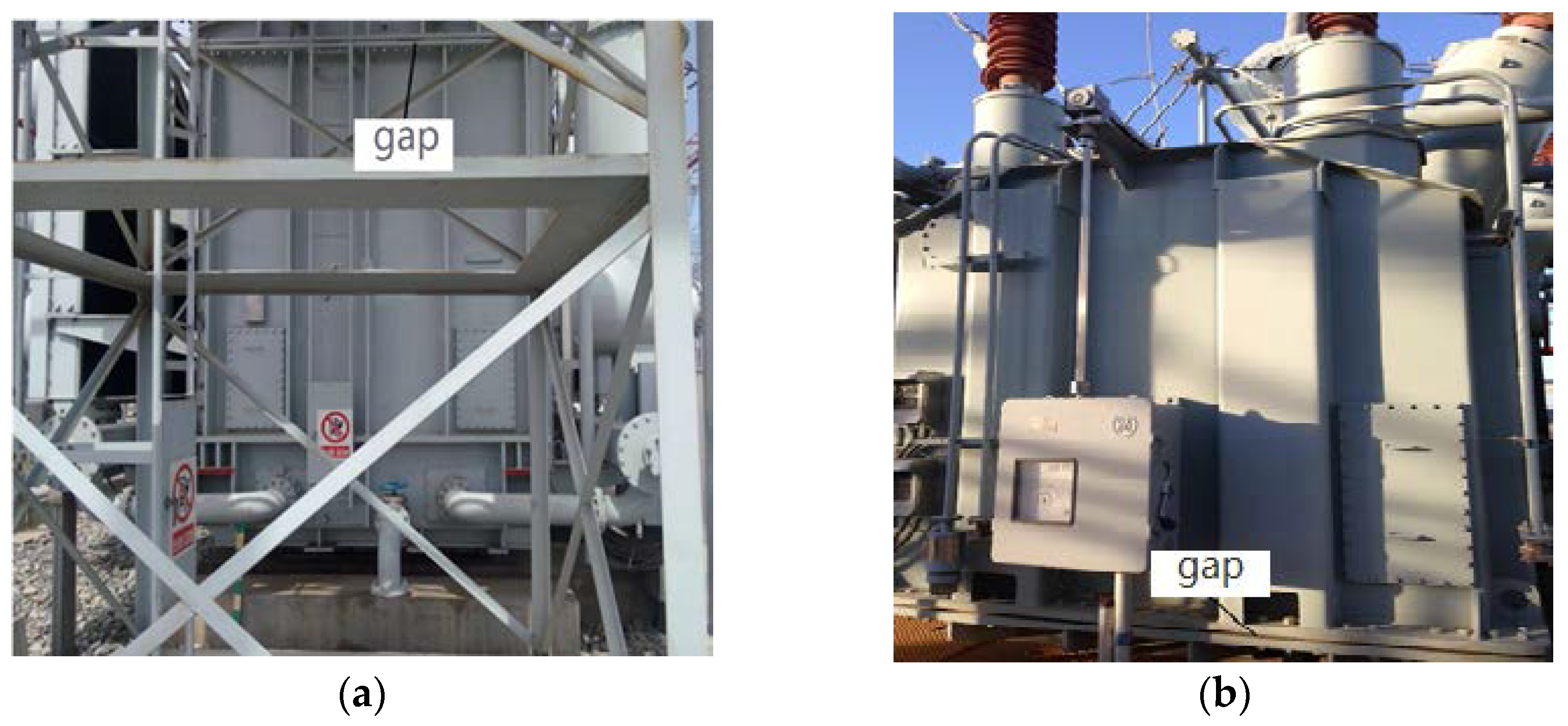
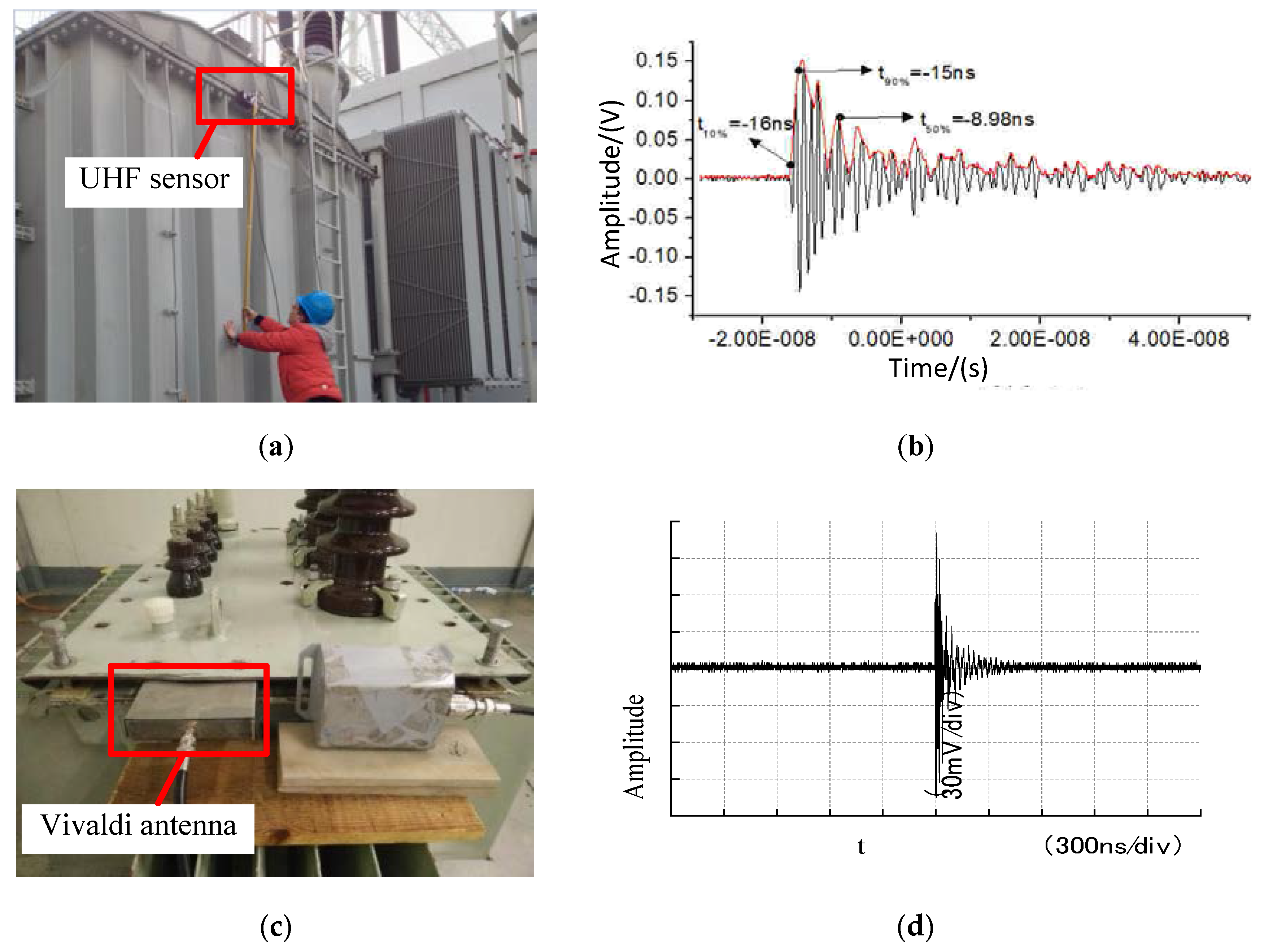
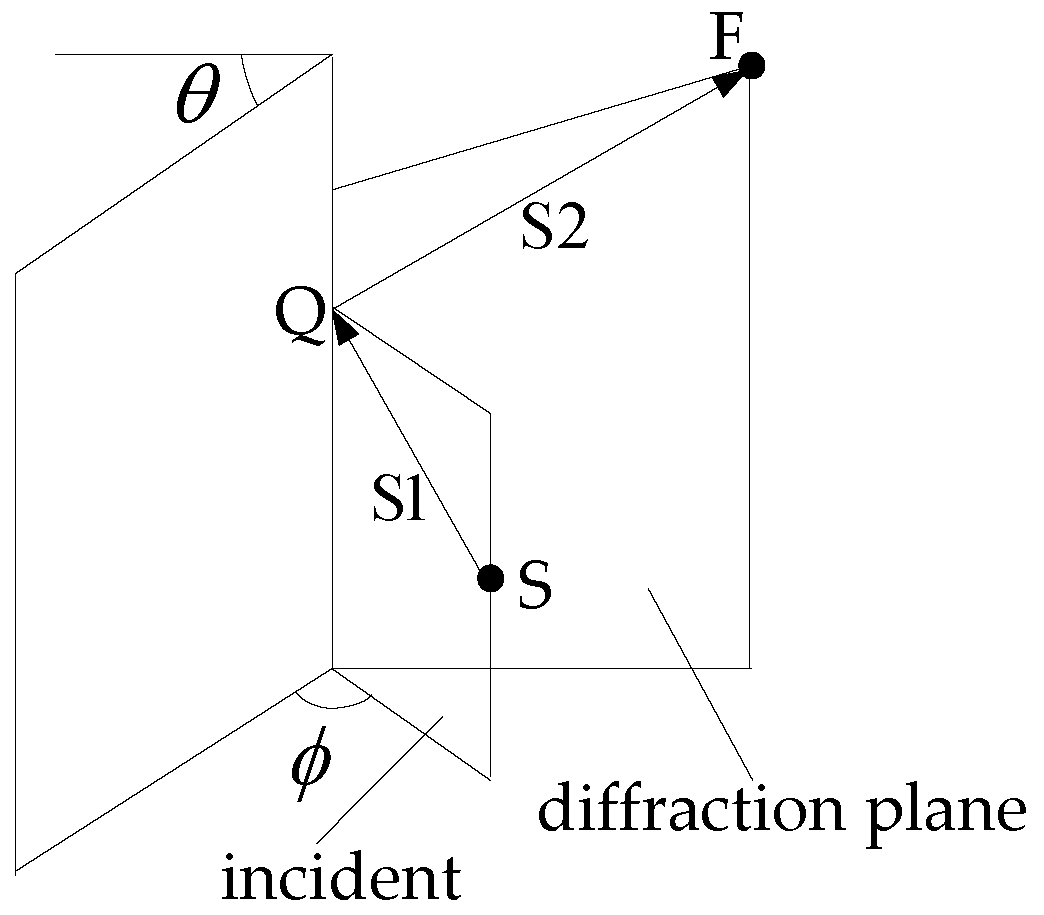


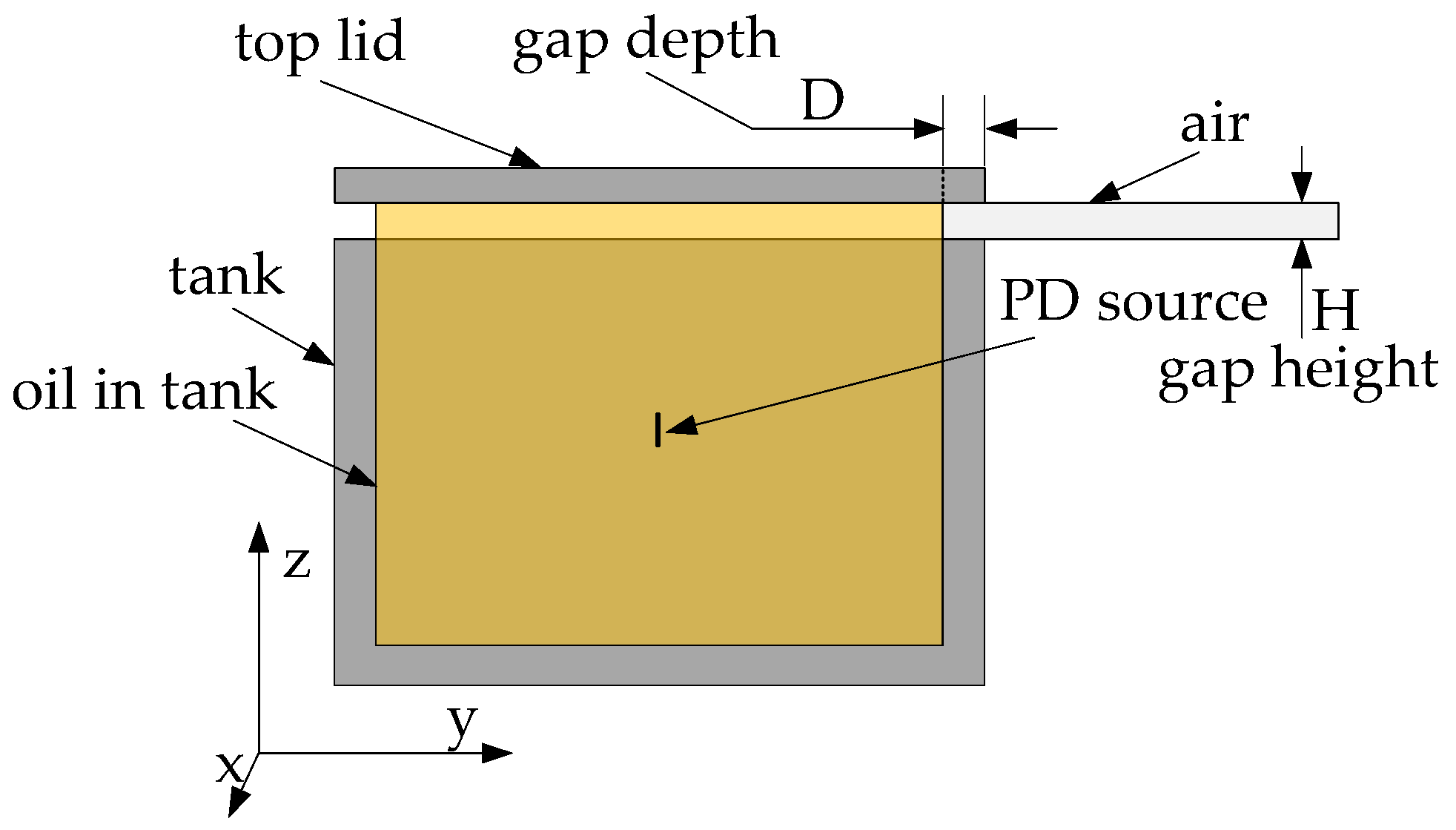
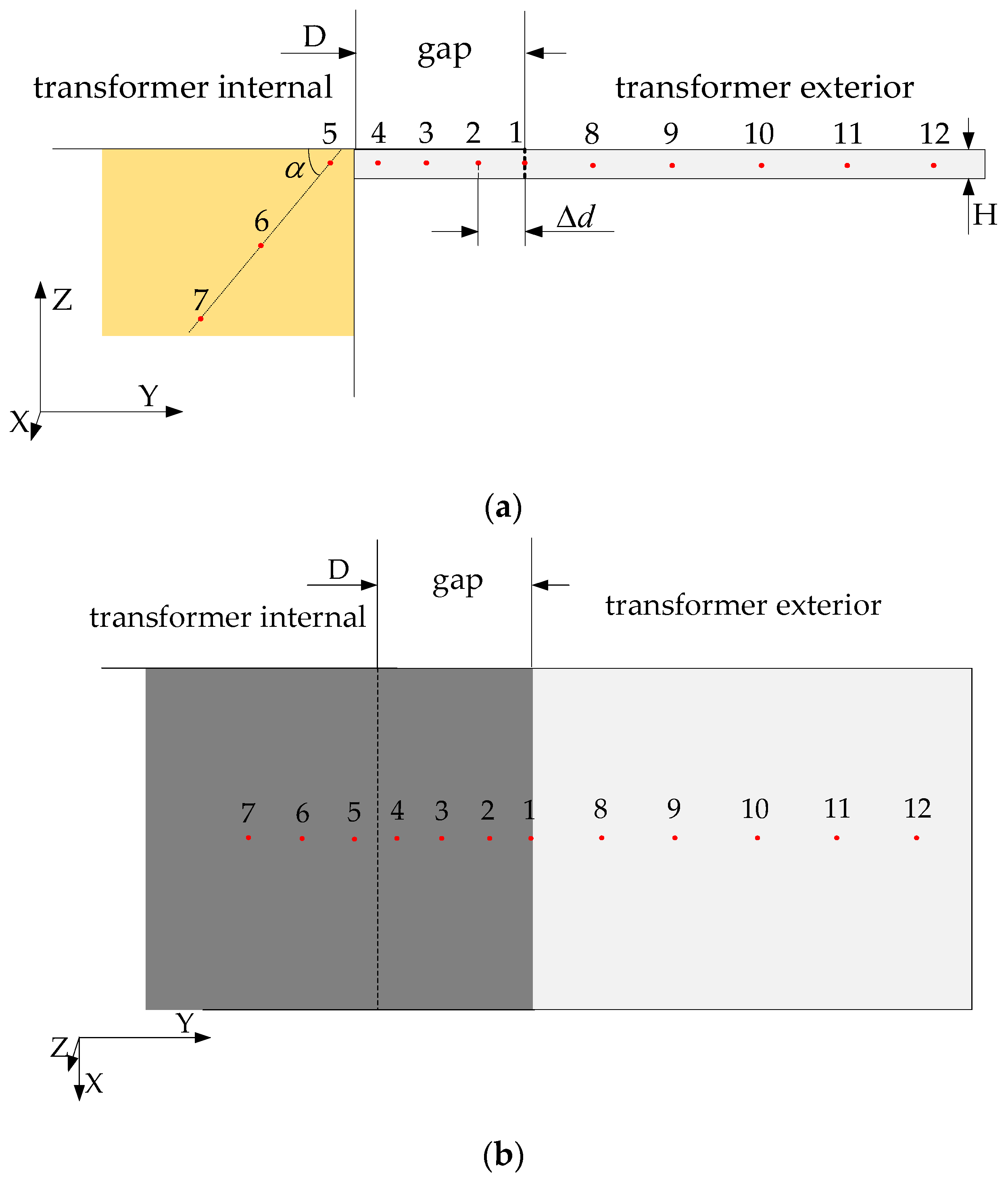
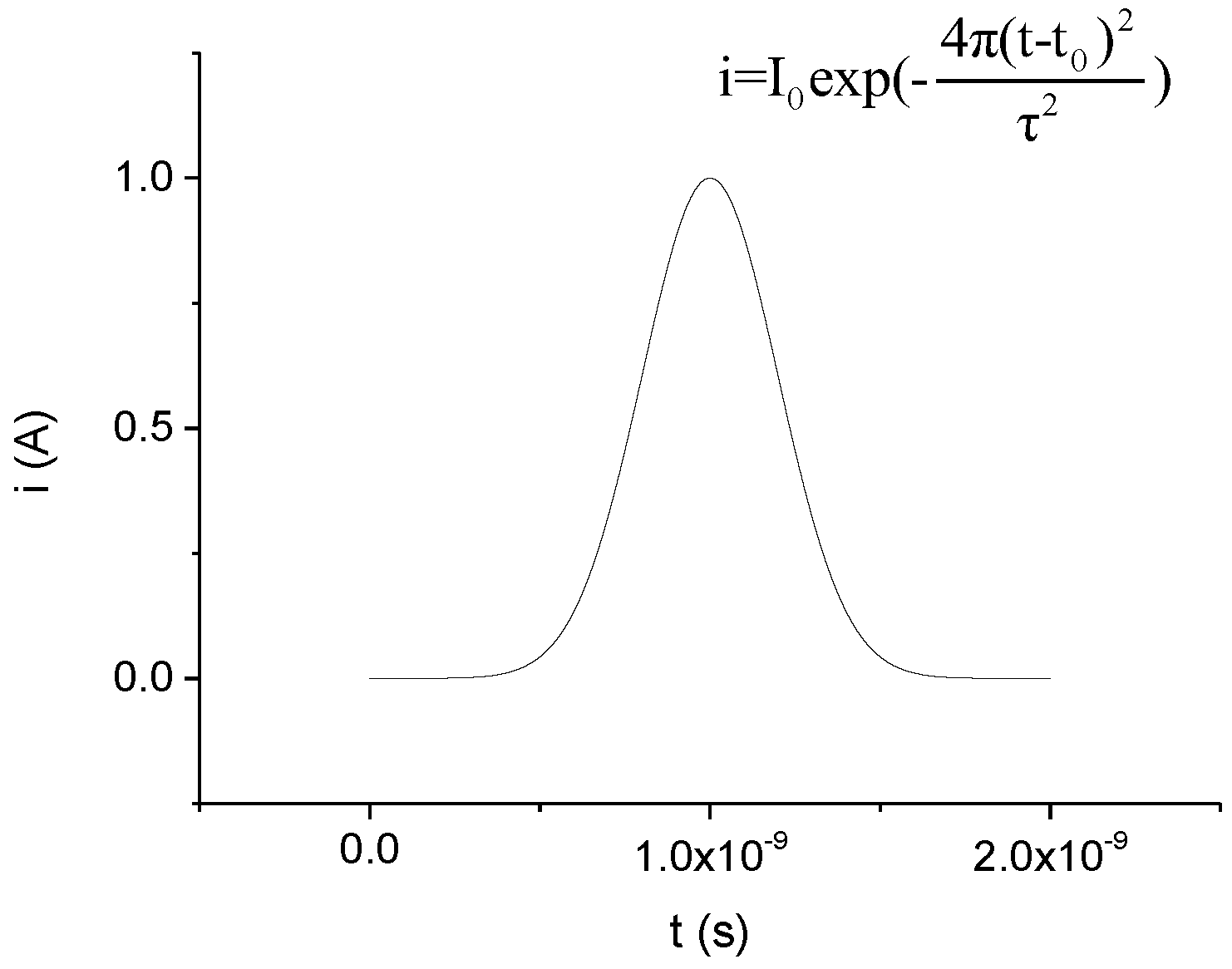
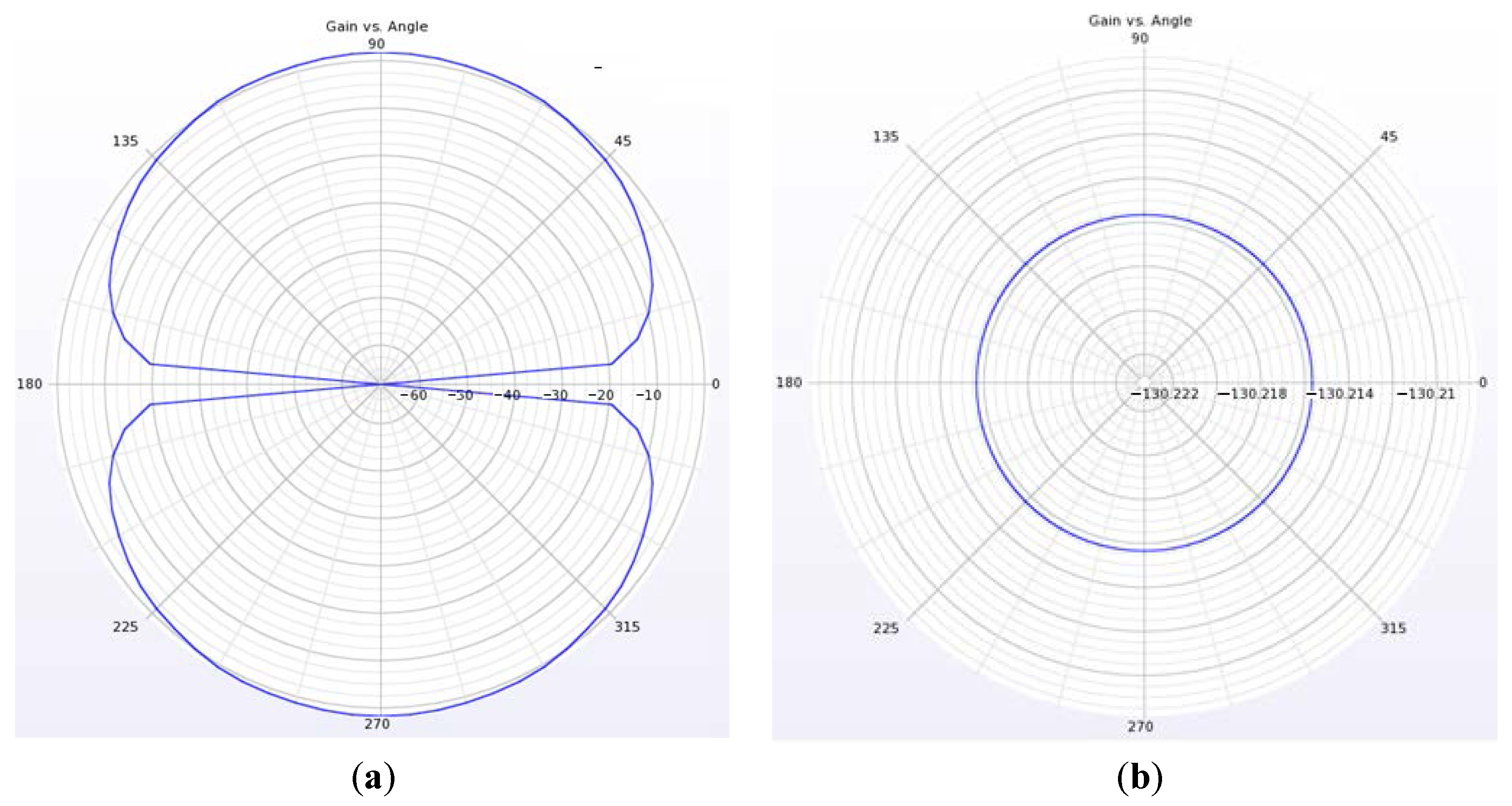

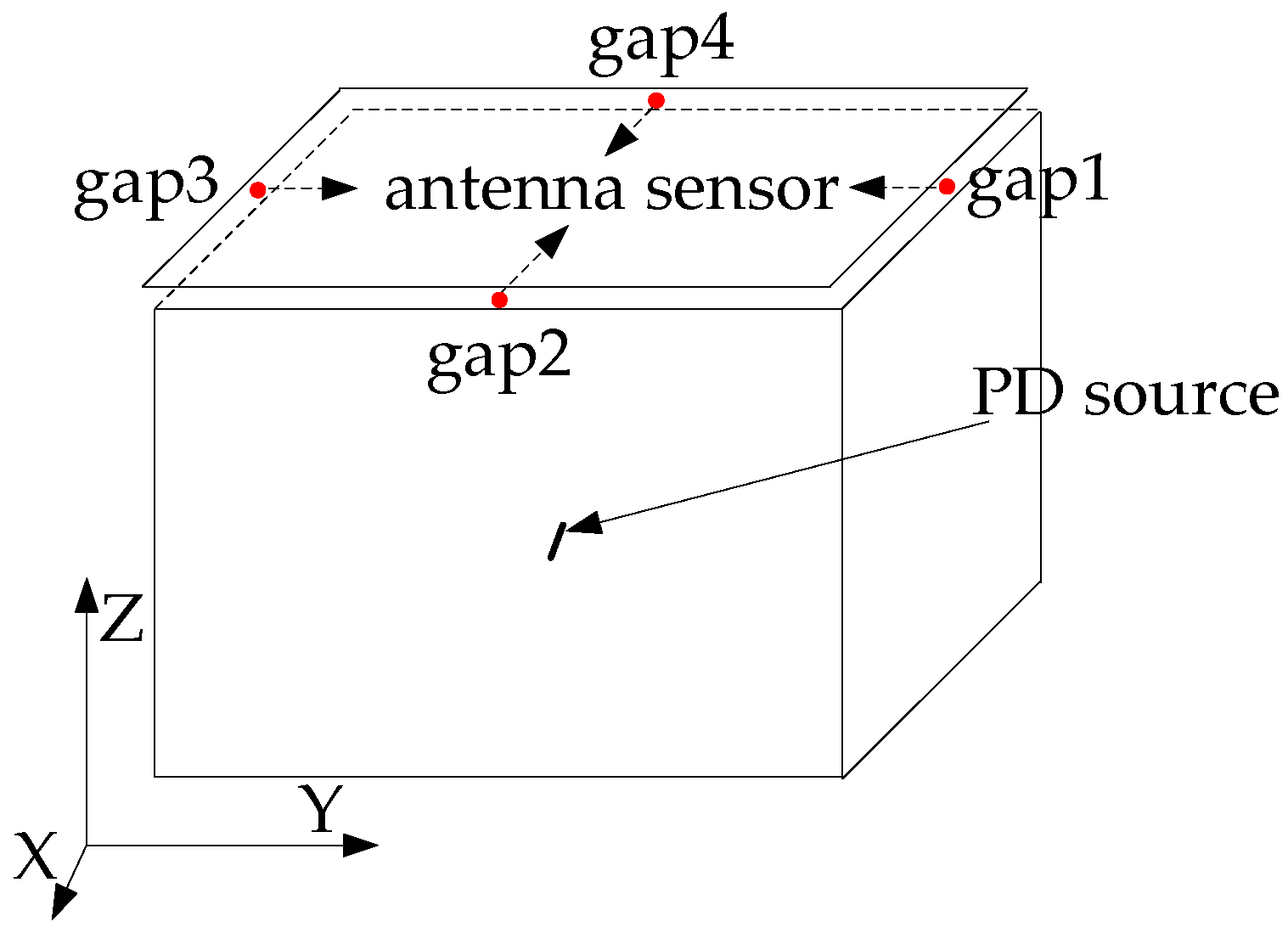


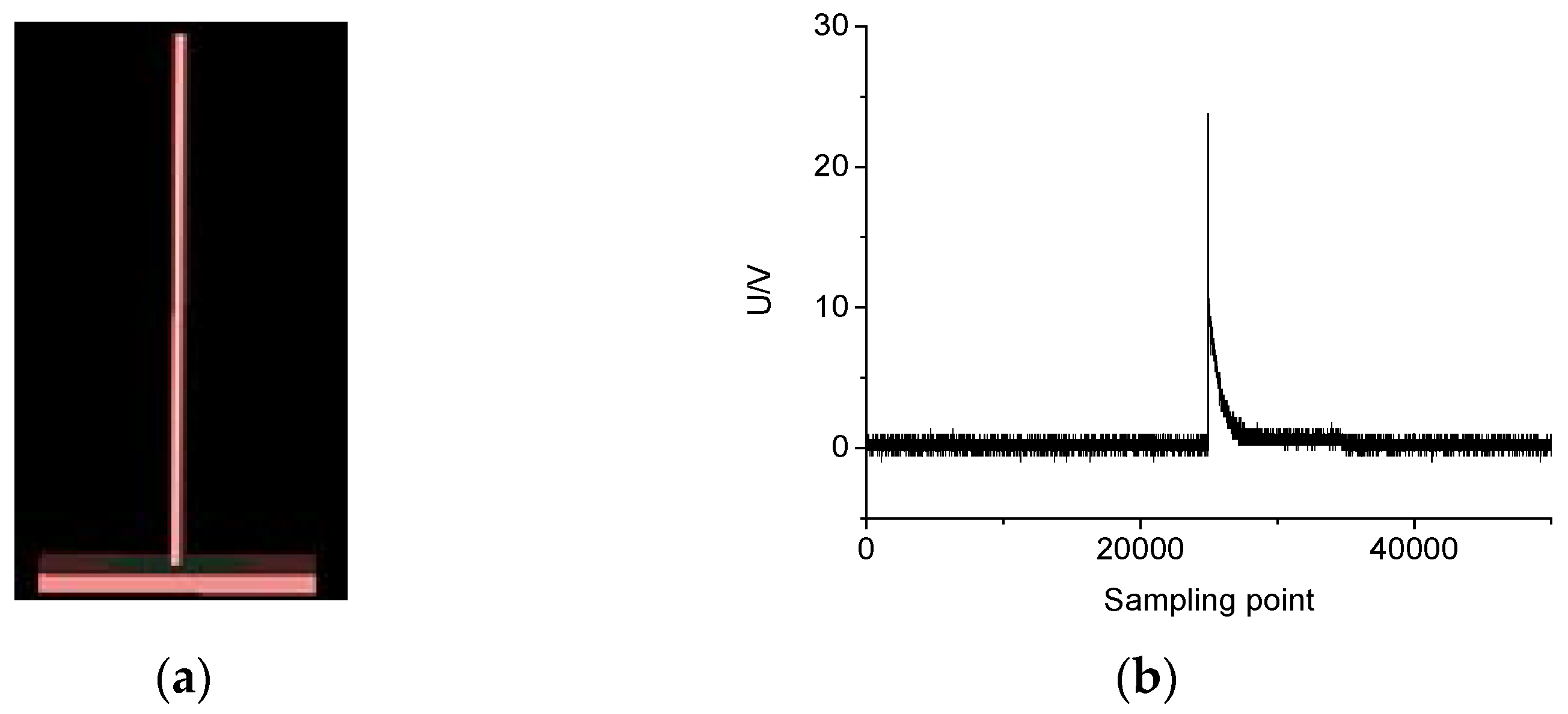
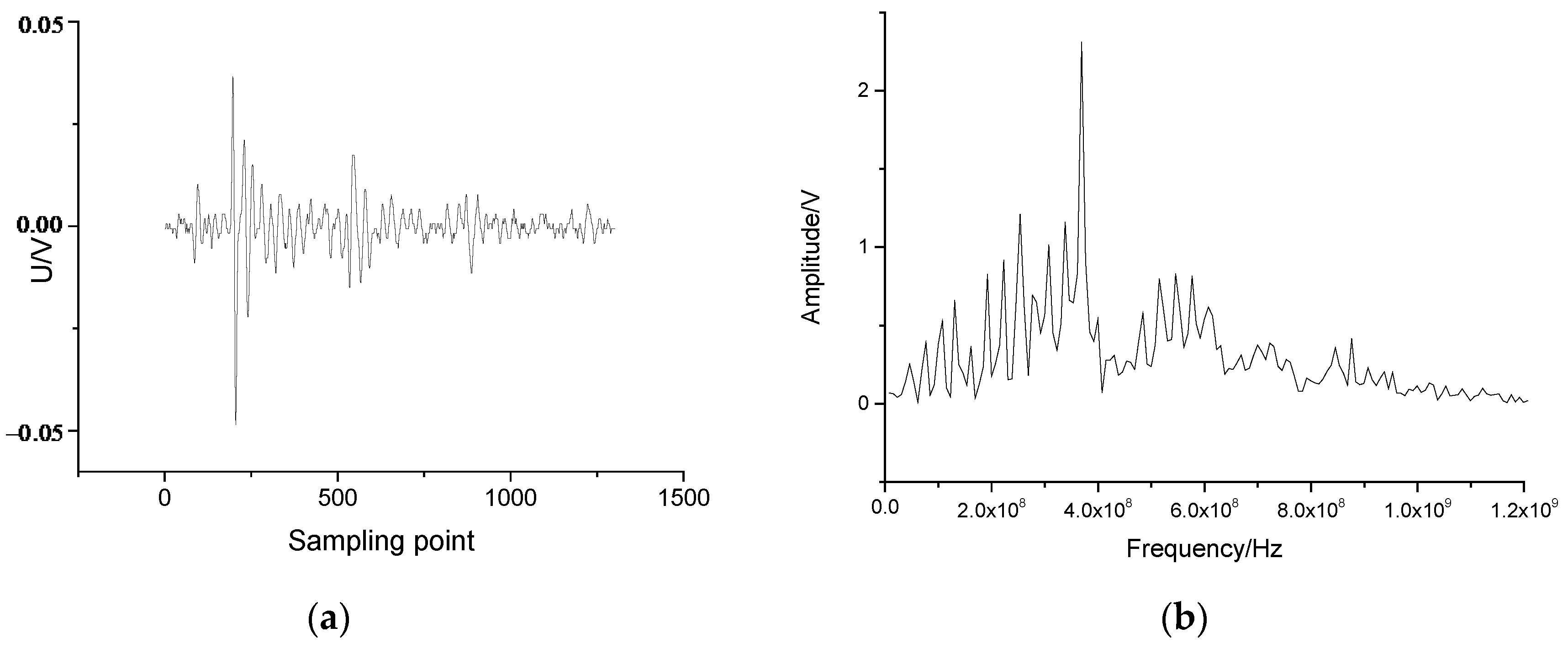

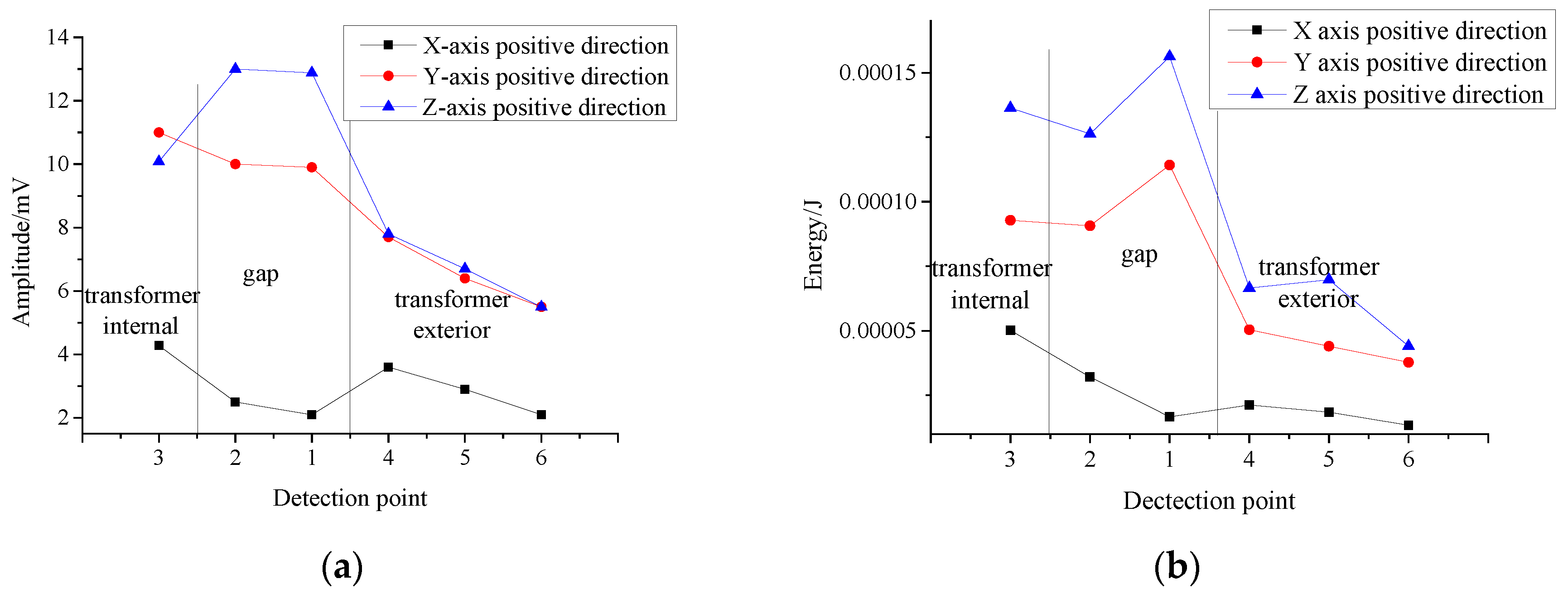



© 2017 by the authors. Licensee MDPI, Basel, Switzerland. This article is an open access article distributed under the terms and conditions of the Creative Commons Attribution (CC BY) license (http://creativecommons.org/licenses/by/4.0/).
Share and Cite
Zhang, X.; Zhang, G.; Li, Y.; Zhang, J.; Huang, R. On the Feasibility of Gap Detection of Power Transformer Partial Discharge UHF Signals: Gap Propagation Characteristics of Electromagnetic Waves. Energies 2017, 10, 1531. https://doi.org/10.3390/en10101531
Zhang X, Zhang G, Li Y, Zhang J, Huang R. On the Feasibility of Gap Detection of Power Transformer Partial Discharge UHF Signals: Gap Propagation Characteristics of Electromagnetic Waves. Energies. 2017; 10(10):1531. https://doi.org/10.3390/en10101531
Chicago/Turabian StyleZhang, Xiaoxing, Guozhi Zhang, Yalong Li, Jian Zhang, and Rui Huang. 2017. "On the Feasibility of Gap Detection of Power Transformer Partial Discharge UHF Signals: Gap Propagation Characteristics of Electromagnetic Waves" Energies 10, no. 10: 1531. https://doi.org/10.3390/en10101531
APA StyleZhang, X., Zhang, G., Li, Y., Zhang, J., & Huang, R. (2017). On the Feasibility of Gap Detection of Power Transformer Partial Discharge UHF Signals: Gap Propagation Characteristics of Electromagnetic Waves. Energies, 10(10), 1531. https://doi.org/10.3390/en10101531




